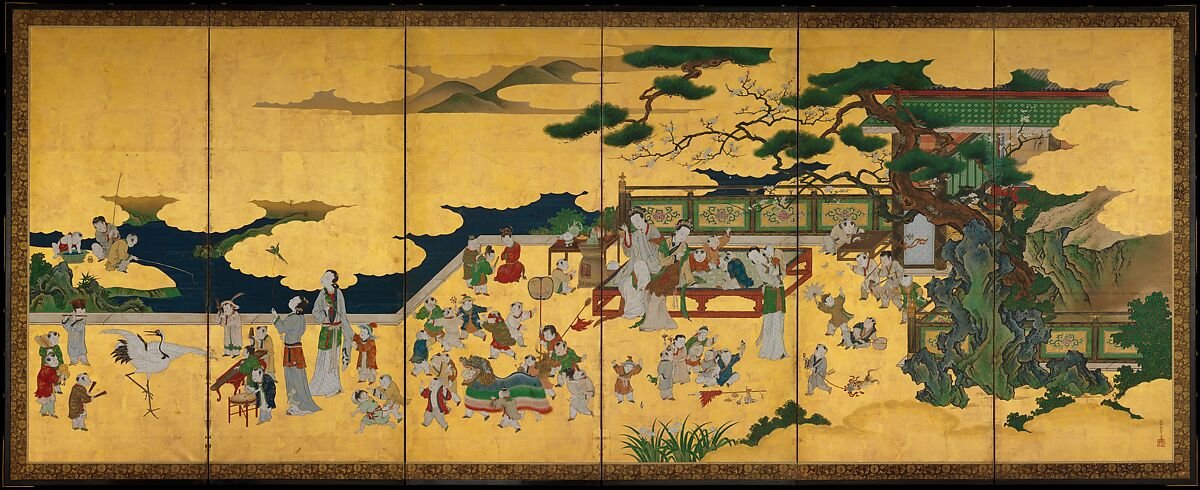Cross-Cultural Conversations: Kyoto’s National Museum of Modern Art
In Kyoto, visitors are prompted to reflect quietly amongst the twisting branches of ancient trees, perfectly raked zen gardens, and reverent temples. With an abundance of onigiri, matcha, udon and tempura, full-bellied tourists visit this city and celebrate the gardens, architecture, and ongoing Buddhist traditions. It is often assumed that this distinct cultural landscape is ‘pure’ — untouched by globalisation and influenced by nothing but Japan itself. These suppositions pour into our understanding of Japanese artistic practice, isolating Japanese works from global influences. Equally, the West often pushes a narrative that privileges Western ‘genius’ in art history and overlooks influences from other cultures, as though Western artists have been the only generators of new artistic styles. However, during my visit to Kyoto’s National Museum of Modern Art, I fell delightedly into a realm of colourful works that blended Japanese and Western artistic practices. In a world where we categorise, divide, and place value on ‘pure’ forms of art, Kyoto’s National Museum of Modern Art (MoMAK) re-enlightened my understanding of fluidity in artistic practice.
‘Traditional’ Japanese art is ornamental and planar. This means that emphasis is placed on the decorative features of the artwork, as well as its two-dimensionality. For instance, in Kano Einō’s One Hundred Boys (17th century), figures and natural imagery are depicted in colour, yet there is an absence of shading, creating a two-dimensional feel. This contrasts with the realism often valued in Western artworks, which generally employ shading and orthogonal lines to render figures and objects with depth. In Japanese works, repeated patterns are more commonly used, in line with the emphasis on decorative style, which emulates the Shinto and Buddhist valuing of harmony within the natural world and the expression of beauty in everyday objects. Western art was also forged through a religious lens, but because of its roots in religious storytelling Western artists have often depicted figures to tell a narrative or express morals. Thus, they have tended to avoid repeated and geometric patterns, focusing less on ornamentation and more on subject and narrative.
Kano Einō, One Hundred Boys, 17th Century. (Image courtesy of the Metropolitan Museum of Art)
MoMAK’s permanent collection immediately captivated my attention as colourful patterns were mixed with poised figures, and botanicals were used to adorn advertisement posters. These modern artworks employed various artistic techniques from both Japanese and Western aesthetics. In art history, this notion is described as a ‘cross-cultural conversation’, shattering the idea that cultural artistic practices exist in isolated chambers. Professors Margaret S. Graves and Alexa Dika Seggerman describe that throughout history, “artists have continued to produce, adapt and respond to the changing material conditions in which they found themselves.” Through travel, trade, and the sharing of cultural practices, artists are in constant dialogue with one another, sharing and adopting new styles.
This was evident in MoMAK’s collection. As I walked through the space, I noticed a poster that featured a vase of flowers rendered in soft pinks and greens in the centre of a simple black background. Titled Poster of an Exhibition of Lyrical Pictures (1918), Yumeji Takehisa’s work was evidently rooted in Japanese aesthetics, as the lack of shading rendered the flower vase in a planar fashion. The naturalistic imagery nodded to the works of the Tokugawa period (1603 to 1867), where the Shogunate embraced Buddhist symbolism and botanical imagery in line with their use of China as a model of good government, intellectualism, and aesthetic pursuit. A cross-cultural conversation with the West was revealed as the flower vase stood alone on the plain background. The absence of pattern and use of negative space was reminiscent of Western still life painting. Through this cross-cultural conversation, Takehisa’s work is reflective of its time period. From 1868 onwards in Japan’s Meiji period, the Japanese government sought political relationships with the West and invited experts, including military strategists, architects, philosophers, and artists, to teach at Japanese universities. Takehisa’s work celebrates how global artistic styles bleed into one another, facilitating these cross-cultural conversations.
Yumeji Takehisa, Poster of an Exhibition of Lyrical Pictures, 1918. (Image Captured by Sasha Blackman)
Within the museum, each room flowed into the next, emulating the fluidity that underpins the notion of cross-cultural exchange. Without boundaries that divided the artworks into ‘traditional Japanese art’ or ‘Modern era,’ I could appreciate each work as a jumble of global aesthetic styles. This aligned interestingly with Japan’s position at the forefront of curatorial innovation throughout the later twentieth century, as groups such as the Gutai art group developed creative ways to showcase art, most notably in open air exhibition, which abandoned the confines of the museum, embracing how art can be positioned in the natural world. Positioned in the centre of one of the rooms and on the surrounding walls, artworks from the Austrian group ‘The Vienna Secession’ were displayed, which embraced Japanese aesthetic style. Formed by Gustav Klimt in the spirit of internationalism, the painter wanted to forge a “new direction of artistic expression”.
Max Benirschke, “Pod” Vignette designed for Book Decoration and Surface Pattern, 1901. (Captured by Sasha Blackman)
Amongst the works on show, the “Pod” Vignette designed for Book Decoration and Surface Pattern (1901) by Max Benirshcke featured four round motifs arranged in a grid-like formation. Black, red, and blue were employed to render intricate patterns within each circular figure. The neat grid of symbols alluded strongly to Japanese artistic practice, and the circular shapes were reminiscent of Japanese Daruma dolls, which are Zen Buddhist talismans of good luck. The beauty of the clean linework and simplified use of colour washed over me, prompting the contemplation of artistic technique over subject. This aligned deeply with the Japanese focus on ornamentation rather than narrative which was refreshing as the West constantly searches for a ‘deeper meaning’ within an artwork, unsatisfied by the beauty itself. This display of European works challenged the notion of Western ‘genius’ as the Vienna Secessions’ works continued to blend cultural aesthetics, highlighting prominent cross-cultural conversations that European artists benefited from through the adoption of Japanese artistic style. In Koloman Moser’s Ver Sacrum (1898), a figure was positioned side-on, wearing a black gown and golden crown. The crown indicated a Western figure, and the absence of pattern on their dark gown further reinforced this. Yet the silhouette highlighted an aesthetic conversation between Japanese and Western culture as the garment’s shape was not particularly reminiscent of either culture. The repeated curved pattern of royal blue and botanical imagery surrounding the figure alluded to the patterns and geometric forms of Japanese artistic practice, whilst the use of text situated the artwork within the throes of a Western audience. Moser’s mixing of artistic techniques highlighted the fluidity of practice within art. It was wonderful to witness the way that cultures are constantly conversing with one another to exchange ideas and methods of expression through visual language.
Kolomon Moser, Ver Sacrum, 1898 (Image Captured by Sasha Blackman)
By displaying artworks that employed both Japanese and Western artistic styles in MoMAK’s permanent collection, I could engage deeply with the works. As the artworks were not categorised into Japanese or European art, I felt a shared sense of humanity and by looking closely at each element depicted within the works, geographical and cultural boundaries dissolved to reveal the fluid nature of artistic practice. As Kyoto is a city that hosts thousands of tourists each year, MoMAK’s curatorial choice to showcase works with a cross-cultural dialogue allows all audiences to engage more actively with Kyoto’s modern art scene. The various works within MoMAK’s permanent collection crumbled the widely accepted narrative of Japan as a keeper of ‘pure’ artistic culture. The incorporation of Western artworks from the Vienna Secession movement further demonstrated the notion of cross-cultural conversation. The use of pattern, naturalistic imagery, and flattened perspective in these works showed a strong engagement with Japanese aesthetics. This also challenged the privileging of Western ‘genius’, as Western artists were influenced greatly by Japanese culture. Like a washing machine on a hot cycle, the artworks within MoMAK’s collection bled into one another, showcasing a wonderful mixing of artistic practice.
I encourage everyone to look more closely at artworks throughout our world. Whether it’s Japan and Europe, Italy and the Ottoman Empire, or Indonesia and Australia, no art exists within a vacuum. It is beautiful to notice these cross-cultural conversations and remember that all cultures are constantly in dialogue with one another.





